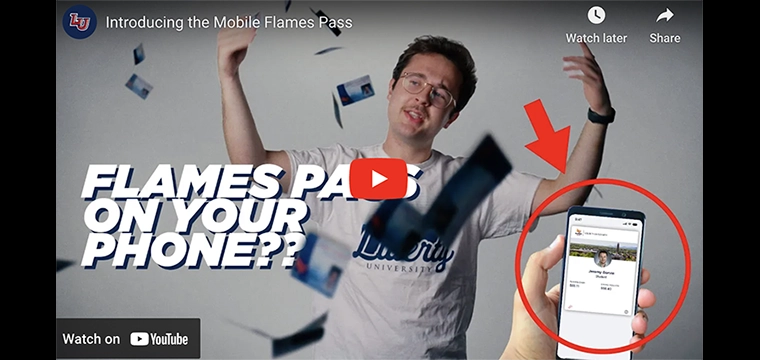Campus card vendors join the party
Heartland Payment Systems and Blackboard both recently launched products for the financial aid market. Both products involve two cards–one for the campus use and another branded card for accessing funds–though both companies report that the cards can be integrated into the student ID.
According to Pedro Marzo, director for Transact Business Development at Blackboard Inc., the aim is to give the student one card that can be used as both the student ID and for payments on and off campus. The university ultimately decides whether to issue one or two cards, though he suggests, “most schools are interested in issuing one card.”
“There was a loud request for an option that was less taxing on students,” says Marzo, explaining the reasons for the creation of Blackboard’s financial aid solution.
There have been serious concerns with requiring students to deposit funds in a school-endorsed account that charges high fees to withdrawal cash, he notes. “Students were paying excessive overdraft fees and not paying them just one or two times but paying them as often as they over drafted.”
BlackboardPay is an open-loop, prepaid card solution accepted anywhere Discover Network cards are accepted. BlackboardPay also leverages First Data’s Money Network account features. Funds disbursed using the BlackboardPay solution are held in FDIC-insured accounts to ensure that clients can meet Title IV obligations.
Cardholders can withdraw cash at ATMs within the Allpoint Network - the largest surcharge-free ATM network in the U.S. The program also supports the Pulse and Star ATM networks. Moreover, cardholders will also have access to convenience checks that can be used to pay bills or cashed at participating Walmart locations.
Most importantly, BlackboardPay won’t charge students non-sufficient fund or overdraft fees, Marzo says. If a student makes a purchase that exceeds their balance in the account the transaction will simply be declined. “The cardholder and the merchant are assured that the funds are available and we use that process to make sure the cardholder isn’t at risk for any overdraft fees,” he says.
In addition, an institution can combine BlackboardPay with Blackboard’s contactless FeliCa card technology to enhance the security of student data and enable a more sophisticated means of PCI compliance. If the school chooses one card without the contactless technology the card will feature two mag stripes, one for activity on campus and another for off campus. Keeping the two separate enabled Blackboard to keep the product in compliance with PCI regulations by segregating the branded financial account number and data from campus applications and systems.
Blackboard has plans to offer more functionality to the program as well, Marzo says. A Web interface to pay bills online and transfer funds to other accounts will be added.
Heartland Campus Solutions offers a product called Acceluraid for financial aid dispersal, says Bill Norwood, chief architect at Heartland Campus Solutions. Acceluraid is a two-card solution, but says Norwood, “the cards are interchangeable in the campus environment.”
At campuses using Acceluraid, Heartland issues students a Discover-branded debit card that can be used to make purchases off campus. On campus, student can access funds in the same account using the student ID, Norwood says. Heartland provides an on-campus ATMs for free withdrawal of financial aid disbursements or refunds. There is also a Web interface to transfer funds and pay bills.
Into the future
The future of financial aid delivery programs will likely be a balancing act between regulation and revenue generation. All campuses will need to meet the federal guidelines, and those seeking revenues will try to keep the remaining balance from the disbursements within school-issued programs.
It is not an easy process to efficiently disburse financial aid to hundreds, thousands or even tens of thousands of students. You have to get it right and you have to do it quickly. And more importantly, you have to do it all while following the guidelines of Title IV. No conversation about campus cards and financial aid is complete without a journey into Title IV compliance.
But what is it and why does it matter?
Title IV, a section of the omnibus Higher Education Act of 1965, spells out rules with regards to U.S. federal student financial aid programs. In essence it is the law of the land for financial aid.
The Higher Education Act of 1965 was enacted during Lyndon Johnson’s administration, “to strengthen the educational resources of our colleges and universities and to provide financial assistance for students in post-secondary and higher education.”
It increased federal money for universities and created scholarships and low-interest loans for students. It is reauthorized periodically giving Congress the opportunity to add and amend provisions. The most recent re-up occurred in 2008 and the next will occur in 2013.
“For the college years we will provide scholarships to high school students of the greatest promise and greatest need and guarantee low-interest loans to students continuing their college studies,” said President Johnson upon passage of the Act. “Every child must have the best education our Nation can provide,” he continued, “Thomas Jefferson said no nation can be both ignorant and free … Today no nation can be both ignorant and great.”
U.S. Department of Education representatives, Brian Kerrigan and Dan Flock summarized the Title IV requirements around campus cards and financial aid disbursement in 2008, noting that institutions may utilize bank accounts for disbursing aid but that an alternate means must be available for students that do not have or want an account.
Further, if an institution opens an account or actively assists students to open an account, certain conditions must be met. The first series of conditions outlined by Kerrigan and Flock are fairly easily met:
The final set of conditions is a bit more difficult to meet and has helped shape the financial aid delivery process:
Remember that these conditions only apply in cases where the campus attempts to drive usage of an account for the disbursement purpose. If a campus simply enables financial aid electronically to the student’s bank of choice, these conditions do not apply. In the case of campus card programs and financial aid delivery and the majority of third-party disbursement service providers, however, these conditions do apply.
The convenient access and no fee requirements are the reason that we see providers placing ATMs on campus and offering either unlimited or a certain number of fee-free cash withdraws. The prohibition against limiting use of the card to certain vendors is largely why we have not seen disbursement to traditional on-campus declining balance accounts.




